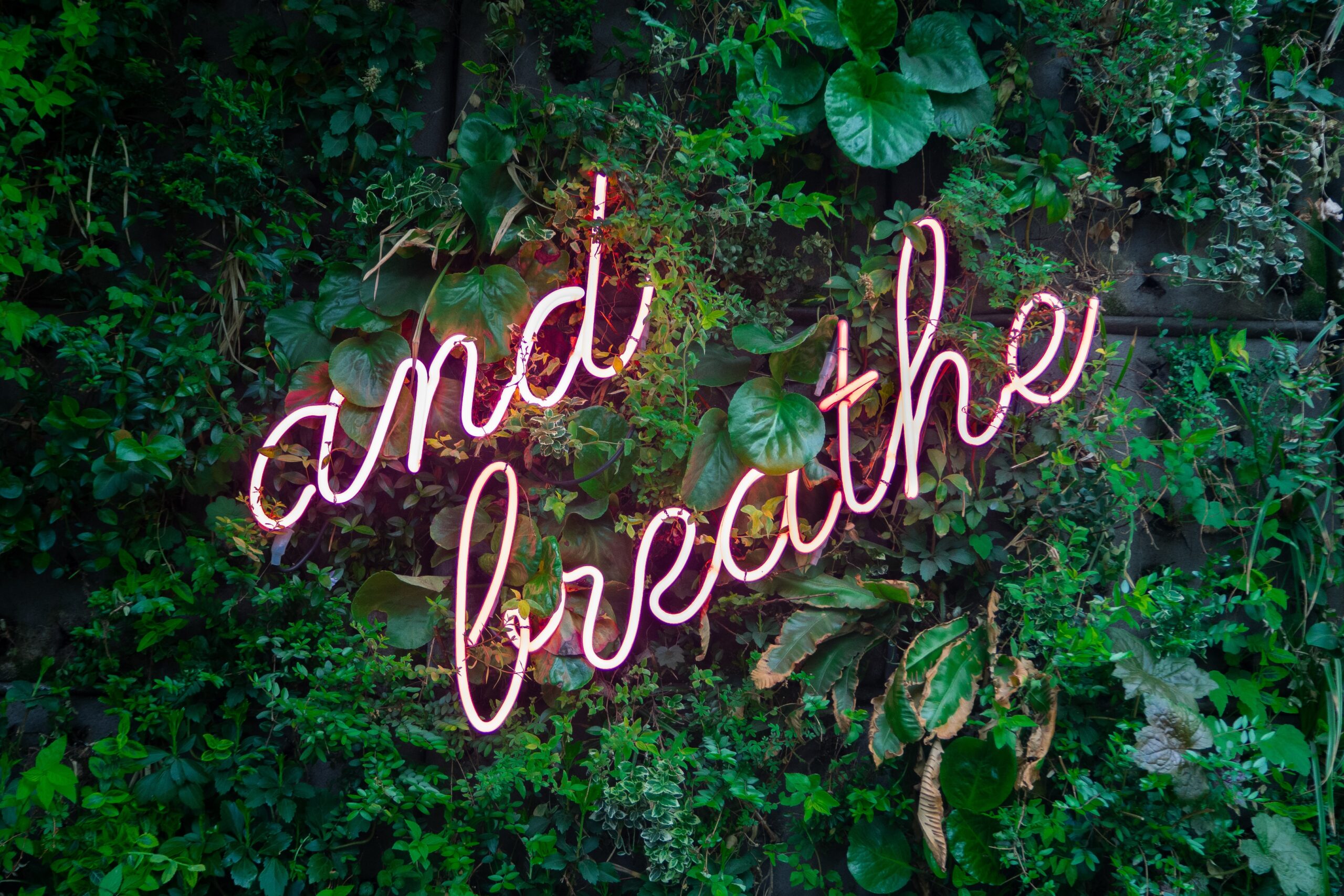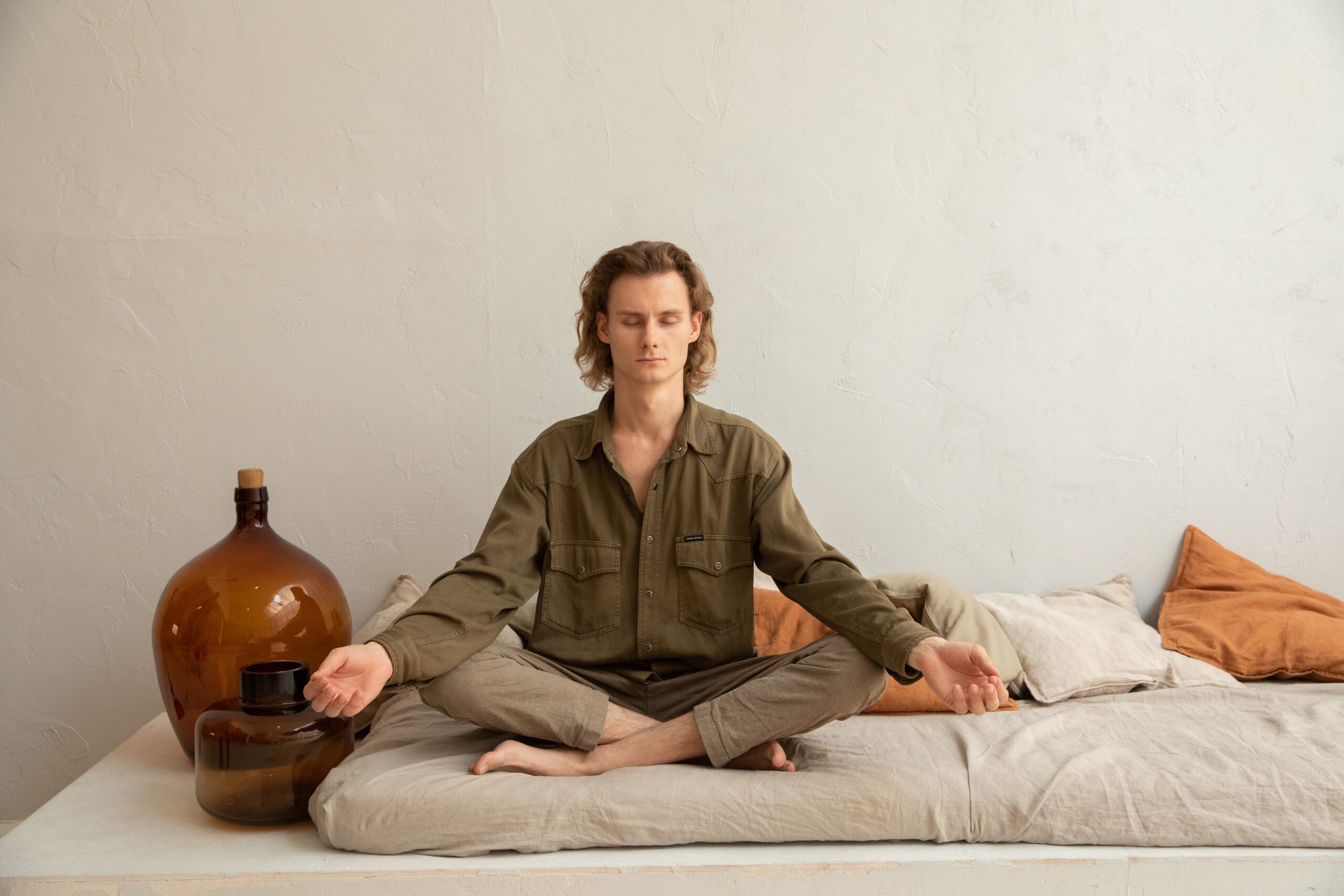Do you feel overwhelmed with life’s demands? Are you struggling to manage stress and anxiety? If so, it may be time to start practicing mindfulness.
Mindfulness is the practice of paying attention to the present moment in a non-judgmental way. It can be a powerful tool for managing stress and anxiety, as it helps bring awareness and acceptance to troubling thoughts and feelings.
I personally know how difficult it can be to deal with anxiety, which is why I’m thrilled to share 9 mindfulness exercises that are specifically designed to quickly reduce anxiety.
These exercises are simple, easy to do, and have been my go-to steps for quite some time. Through these activities, you will learn how to stay in the moment and divert your focus away from anxious thoughts. Each of the exercises takes minimal time and effort, so you can easily fit them into even the busiest of days!
Whenever I’m feeling overwhelmed and need to chill out, I always follow these simple steps in the same order.

Take a Deep Breath
First, sit or lie down in a comfortable position with your back straight. Close your eyes. Taking a deep breath is like hitting the reset button for your body and mind.
When you’re feeling anxious or stressed, your breathing can become shallow and rapid. But by taking a deep breath, you slow down your breathing and bring oxygen to your brain, helping you feel calmer and more relaxed.
To take a deep breath, simply inhale deeply through your nose, hold it for a few seconds, and then exhale slowly through your mouth. Repeat this several times, focusing on the sensation of the air moving in and out of your body.
Taking a deep breath is a simple, yet effective, way to reduce anxiety and bring yourself back to the present moment. It’s like taking a mini-vacation from your worries and allowing yourself to relax and recharge. So, take a deep breath, hold it, and let it out.
Observe Your Thoughts
So, now that you’re all cozy and relaxed, it’s time to get up close and personal with your thoughts. This step is all about observing your thoughts without judgment.
Think of your mind like a crowded room, with thoughts and feelings buzzing around like busy little bees. Some thoughts might be positive, while others may be negative or anxious. The key to this exercise is to simply watch those thoughts without getting caught up in them or trying to change them.
To get started, focus on your breathing. This helps anchor your mind and create a sense of calm.
As you inhale and exhale, you might notice that some thoughts are louder or more persistent than others. That’s okay! Just observe them, like clouds passing by in the sky.
Notice the thoughts, but don’t cling to them or try to control them. Simply let them come and go, and bring your focus back to your breathing.
It can be helpful to imagine that you’re a curious, detached observer of your own mind. This can make it easier to step back from your thoughts and feelings and view them from a more objective perspective.
With practice, you’ll find that this mindfulness exercise can help reduce anxiety levels, improve focus and concentration, and bring more peace and balance into your life. So, breathe deeply, and watch those thoughts float by like balloons on a summer day.

Observe Your Feelings
Now that you’ve gotten a handle on observing your thoughts, let’s move on to observing your feelings.
Think of your emotions as waves in an ocean. Some may be big and intense, while others may be more subtle and subdued. The goal of this exercise is to simply become aware of your emotions without trying to change or suppress them.
Start by taking a few deep breaths, and then focus on your body. See if you can sense any physical sensations that might be related to your emotions. For example, you might feel a tightness in your chest, a racing heart, or a knot in your stomach. Just observe these sensations without judgment and acknowledge the feelings that are present.
It can be tempting to try to push away unpleasant emotions or get lost in them, but the key is to maintain an attitude of detachment and curiosity. Try to view your emotions as interesting, neutral phenomena rather than as a reflection of your self-worth or personal flaws.
With time and practice, this mindfulness exercise can help you develop emotional intelligence, increase self-awareness, and reduce anxiety. So, let those feelings flow like waves, and observe them with a sense of curiosity and compassion.

Acceptance and Letting Go
Awesome! Now that you’ve got the hang of observing your feelings, let’s move on to step four – acceptance and letting go. This step builds on the previous one and helps you cultivate a greater sense of peace and calm.
So, when you notice a feeling that’s causing you stress or anxiety, instead of trying to push it away or resist it, simply allow yourself to fully experience it. Imagine that you’re holding the feeling in your hands, like a hot coal. Let it be there without trying to change it.
Now, imagine that you’re letting the feeling go, like you’re releasing a balloon into the sky. See it float away until it’s just a tiny speck in the distance.
This step is all about accepting your feelings, no matter how unpleasant they may be, and letting them go without judgment.
By practicing acceptance and letting go, you’ll become more detached from your emotions, reducing feelings of stress and anxiety. You’ll also be building resilience, allowing yourself to better handle difficult feelings when they arise in the future. So take a deep breath, let it all in, and let it all go.

Being Present in the Moment
Step five, being present in the moment, is all about bringing your attention to the here and now. When you’re caught up in worry or stress, it’s easy to get lost in your thoughts and miss out on what’s happening right in front of you.
But when you bring your attention to the present moment, you can experience a greater sense of peace and calm.
Here’s how you can practice being present: Start by paying attention to your senses. What do you see, hear, touch, taste, and smell? Take it all in and savor each sensation.
Let your mind be fully absorbed in the present moment without getting caught up in thoughts about the past or future.
If you find yourself getting caught up in thoughts, simply observe them and bring your attention back to the present moment. You can also use a simple phrase like “I am here now” as a gentle reminder to come back to the present.
Being present in the moment is like taking a mental break from the hustle and bustle of life. It allows you to slow down, breathe, and connect with the world around you. So, take a deep breath and fully immerse yourself in the here and now!
Practicing Gratitude and Appreciation
Step six, practicing gratitude and appreciation, is all about focusing on what you have instead of what you don’t have.
When you’re feeling anxious or stressed, it’s easy to get caught up in negative thoughts and overlook all the good things in your life.
But when you shift your focus to gratitude, you can cultivate a greater sense of peace and happiness.
Here’s how you can practice gratitude: Start by making a mental or written list of things you’re grateful for. It can be anything, big or small, from a roof over your head to a good cup of coffee. Take a moment to appreciate each item on the list and feel the gratitude in your heart.
You can also try writing a gratitude letter to someone you’re thankful for, or reflecting on a difficult situation and finding something to be grateful for in that experience.
Practicing gratitude is like shining a spotlight on the positive aspects of your life. It helps you shift your focus away from what’s not working and cultivates a greater sense of well-being. So, take a deep breath and show some love to the good things in your life!
Related Article | Good mental health: How to improve yours (and maintain it for life)
Using Positive Self-Talk and Visualization
Think of your thoughts as the seeds that you plant in your mind. The seeds you plant determine the type of harvest you’ll reap. So why not plant some positive seeds and reap a bountiful harvest of happiness and well-being? That’s where positive self-talk comes in.
Positive self-talk is all about speaking kindly to yourself. When you notice negative thoughts creeping in, replace them with positive affirmations.
For example, if you’re feeling down on yourself, try saying something like, “I am worthy and deserving of love and happiness.” Repeat these affirmations to yourself throughout the day and watch your mood start to lift.
Visualization is like planting mental seeds that bloom into beautiful flowers of hope and happiness. Close your eyes and imagine yourself in a positive scenario, like achieving your goals or finding love. See yourself there, feel the emotions, and let it all sink in.
This type of mental rehearsal can boost your confidence and motivation, making it easier to achieve your goals in real life.
Positive self-talk and visualization are like the sun and water for your mental seeds. They help your positive thoughts flourish and bring you closer to the life you want.
So, speak kindly to yourself, close your eyes, and imagine a better future. The sky’s the limit!

Laugh At Yourself and Smile
Ah, step eight: laughing at yourself and smiling. This step is all about finding the humor in life, even in the most stressful of situations.
Laughter is like a magical elixir that can instantly boost your mood and reduce anxiety. When you can laugh at yourself and your mistakes, it takes the pressure off and helps you see the lighter side of life.
So, don’t take yourself too seriously, and don’t be afraid to have a good belly laugh.
Smiling, on the other hand, is like a contagious virus—it spreads joy and positivity wherever it goes. When you smile, even if it’s just a fake one, your brain is tricked into thinking you’re happy. and before you know it, you’ll find yourself feeling happier and more relaxed.
Laughing at yourself and smiling are like a double dose of happiness. They help you lighten up and bring a smile to your face.
So, put on your biggest grin and spread some joy to those around you.
Tell yourself your next steps
And finally, we come to step nine: telling yourself your next steps. This step is about taking action and moving forward.
It’s all well and good to practice mindfulness exercises and work on reducing your anxiety, but it’s important to have a plan for what comes next.
What are your goals? What steps can you take to achieve them? Write them down and be specific.
Think of yourself as the captain of your own ship. You’ve been charting a course to a more relaxed and fulfilled life, and now it’s time to set sail. By having a clear understanding of your next steps, you’re taking control of your life and steering yourself in the right direction.
Telling yourself your next steps is like reaching the finish line of a marathon. You’ve worked hard, and now it’s time to celebrate your accomplishments. So, write down your goals, make a plan, and take action. The journey may be long, but the destination is worth it!
In conclusion, these 9 mindfulness exercises can be a powerful tool to help reduce anxiety and improve mental wellness.
By taking a deep breath, observing your thoughts and feelings, accepting and letting go, being present in the moment, practicing gratitude and appreciation, using positive self-talk and visualization, laughing at yourself and smiling, and setting next steps, you can create a foundation for inner peace and clarity.
It’s important to remember that everyone’s experience with anxiety is unique, and there’s no one-size-fits-all solution.
However, by incorporating these mindfulness exercises into your daily routine, you can gain greater control over your thoughts, emotions, and physical sensations and live a more fulfilling and joyful life.
If you ever experience anxiety, feel free to bookmark this page and return to it for guidance and support. You can also share this article with friends and family members who might benefit from these practices. Remember, you’re not alone, and there’s always hope for growth, healing, and resilience.
FAQ
What are the signs of anxiety?
The signs of anxiety can include feelings of nervousness, fear, and worry, as well as physical symptoms like heart racing, sweating, and difficulty sleeping.
Performance anxiety, also known as stage fright, is the fear of being judged or scrutinized during a performance, which can cause feelings of nervousness, worry, and stress.
Night time anxiety is a feeling of nervousness or fear that occurs during the night and can make it difficult to fall or stay asleep. This type of anxiety can be caused by stress, worry, or other life events.
Why does my anxiety get worse at night?
Anxiety can get worse at night for various reasons, such as increased stress and less physical activity during the day, increased exposure to triggers, and the body’s natural decline in melatonin levels. Meditation, mindfulness, deep breathing, and other calming techniques can help ease night time anxiety.
Yes, anxiety can cause chest pain, as well as other physical symptoms like heart palpitations, shortness of breath, and tightness in the chest.
Yes, anxiety can cause nausea, along with other physical symptoms like stomach aches, dizziness, and headaches.
Yes, anxiety can cause headaches, along with other physical symptoms like muscle tension and neck pain.
Can anxiety cause shortness of breath?
Yes, anxiety can cause shortness of breath, along with other physical symptoms like heart palpitations, chest pain, and dizziness.
What are some ways to deal with driving anxiety?
To deal with driving anxiety, it can be helpful to engage in relaxation techniques like deep breathing or meditation, listen to calming music, or consider seeking therapy or counseling. Gradually increasing the amount of time spent driving, starting with short trips and gradually working up to longer ones, can also help reduce anxiety.
How do you know if you have anxiety?
You may have anxiety if you frequently experience feelings of nervousness, worry, or fear along with physical symptoms like heart racing, sweating, and difficulty sleeping. If your anxiety is impacting your daily life, it is recommended to seek the help of a medical or mental health professional.
Can affirmations help with anxiety?
Yes, affirmations can be a helpful tool in managing anxiety.
What are some affirmations for anxiety?
Affirmations for anxiety can include positive statements such as “I am calm and at peace,” “I trust in my abilities,” and “I am in control of my thoughts and emotions.” Repeat these affirmations to yourself during times of anxiety to help reframe negative thoughts and promote feelings of calm and relaxation.
To ease anxiety, it is important to engage in relaxation techniques like deep breathing, mindfulness meditation, or yoga. It is also important to manage stress, get adequate sleep and nutrition, and engage in physical activity. Seeking therapy or counseling can also be a helpful way to cope with anxiety.
How can you deal with anxiety attacks?
To deal with anxiety attacks, it is important to focus on your breathing and engage in relaxation techniques like deep breathing or meditation. Seeking therapy or counseling can also be a helpful way to manage anxiety attacks and develop coping skills.
There are several ways to calm anxiety, including mindfulness meditation, deep breathing exercises, progressive muscle relaxation, physical activity, and talking to a trusted friend or therapist. Practicing affirmations and positive self-talk can also be helpful. Additionally, certain natural remedies, such as chamomile tea and essential oils, have been known to have a calming effect. It’s important to find what works best for you and to make it a regular part of your routine.
What are some techniques for calming anxiety?
There are several techniques that can help calm anxiety, including deep breathing, mindfulness meditation, exercise, and journaling. Engaging in physical activity, such as yoga or going for a walk, can also be helpful. Additionally, talking to a trusted friend or therapist and developing coping mechanisms, such as positive affirmations, can make a big difference.
Anxiety can be caused by a number of factors, including genetics, brain chemistry, environmental factors, and life events. Identifying the cause of your anxiety is an important step in finding effective ways to manage it. Talking to a mental health professional or seeking therapy can also help you better understand and cope with your anxiety.
How to deal with anxiety and overthinking?
To deal with anxiety and overthinking, it’s important to practice mindfulness and focus on the present moment. Try to engage in activities that bring you joy, like hobbies or exercise, and avoid alcohol and caffeine, which can worsen anxiety. Consider seeking therapy or counseling and trying stress-reducing techniques such as deep breathing, meditation, and yoga. Additionally, make sure to get enough sleep, eat a healthy diet, and make time for self-care and relaxation.
